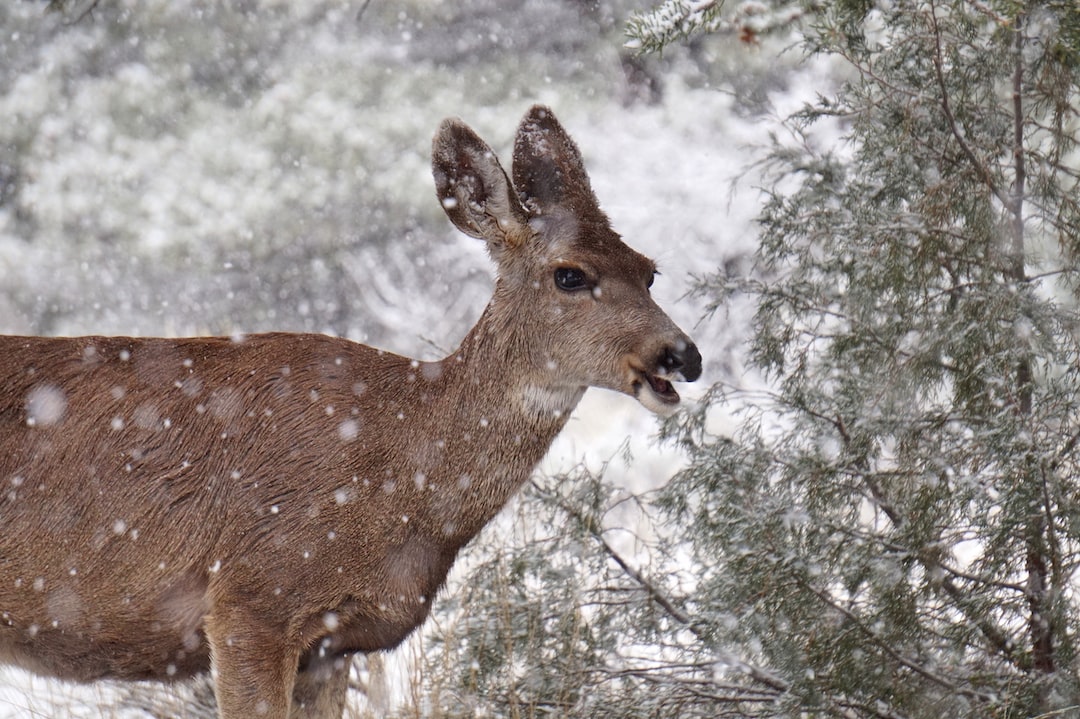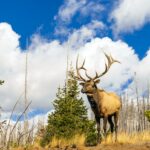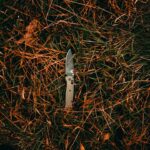What kind of plants do deer eat? It’s a question many hunters, sportsman and outdoors enthusiasts ask.
But what do mule deer and whitetail deer actually consume in the wild? And how can you identify good hunting country for them based on their diet?
We’ll explore these questions and more as we take an in-depth look at the diets of both species, along with plant species that attract them to certain areas. Get ready to learn all about what vitamins and minerals they need too.
Mule Deer Diet
Mule deer are a species of deer found in western North America, and they have unique dietary needs that must be met for them to remain healthy.
Mule deer rely on a range of edibles, including grasses, shrubs, foliage, buds, twigs and various fruits or nuts. Mule deer also occasionally consume insects and small animals such as mice or birds.
What Do Mule Deer Eat?
In the summer months when vegetation is plentiful, mule deer primarily eat grasses and other green plants like clover or alfalfa. During winter months when food sources are scarce they may switch to eating woody browse like twigs from shrubs or trees. They will also supplement their diets with high-protein items like legumes or nuts if available.
Where Do Mule Deer Find Food?
Mule deer typically find food in open areas where there is plenty of sunlight for plants to grow such as meadows or fields near rivers and streams. Mule deer can be observed foraging on sloping hills prior to the sun’s elevation becoming too intense, allowing them to browse without being exposed to excessive heat.
Mule deer, with their varied diets depending on the season, present a formidable challenge to hunters. Moving onto whitetail deer, we will explore what they eat and where they find food throughout the year.
Whitetail Deer Diet
Whitetail deer, a common sight in the rural western US, offer thrilling hunting prospects. Knowing what whitetail deer eat and where to find them is essential for successful hunting trips.
Whitetails have diverse diets that change throughout the year, so understanding their dietary habits is key to successful hunting.
What Do Whitetail Deer Eat?
In spring and summer, whitetail deer primarily feed on grasses, herbs, leaves of woody plants, fruits, mushrooms and nuts. In addition to their usual diet, whitetail deer also consume agricultural crops such as corn or alfalfa when available.
In autumn and winter when these food sources become scarce due to cold weather or snow cover whitetails turn to twigs from shrubs and trees for sustenance.
They will also browse bark from trees during this season as well as consume buds from branches which provides them with additional nutrients like proteins and carbohydrates needed for energy during the colder months of the year.
Where Do Whitetail Deer Find Food?
Whitetails generally prefer open habitats such as fields or meadows because it allows them easy access to food sources like grasses or herbs growing there but they can also be found in wooded areas browsing on tree branches or eating acorns dropped by oak trees in late fall/early winter seasons.
They may even venture into urban settings near parks looking for edible vegetation like flowers planted along walkways or gardens maintained by homeowners who live nearby giving hunters more opportunities to spot these animals depending on location.
Whitetail deer’s fare varies over the course of a year, and they can be drawn to particular plant varieties. By understanding what plants are preferred by deer, it is possible to identify good plant species for attracting them into your area.
Plant Species That Attract Deer
When it comes to deer hunting, understanding which plants attract them can be beneficial for finding the best locations. Deer are naturally drawn to certain types of vegetation and can be enticed with a variety of fruits and vegetables.
Knowing what these preferred plants are and how to identify them can help you find prime locations for hunting mule or whitetail deers.
Common deer-attracting plant species include acorns, apples, corn, clover, grasses, alfalfa hay and oat hay as well as soybeans. These foods provide essential nutrients such as protein and carbohydrates that keep deer healthy throughout the year.
In addition to these food sources, other attractive plants include flowering shrubs like honeysuckle or wild roses; trees such as maples or willows; evergreens like junipers; vines like Virginia creeper; and various herbs including mints or sages.
All of these provide valuable cover for resting areas during hot days in summer months when shade is needed from intense sunlight exposure.
Knowing which vegetation deer like to munch on is a key piece of intel for any hunter, so it’s vital to have an understanding of the types of plants that attract them when planning hunting expeditions. Identifying good hunting country for deer is the next step in ensuring a successful hunt; learning how to read the landscape and identify prime locations will give you a greater chance at success.
Identifying Good Hunting Country for Deer
When it comes to hunting deer, the first step is identifying good hunting country. To determine the right hunting area, a variety of components must be taken into account.
The terrain of the area should be evaluated for its potential as a habitat for deer. Areas with plenty of cover such as thickets and dense vegetation are ideal spots for deer to hide and feed in safety.
Additionally, access points such as game trails or water sources can help hunters identify areas where deer may travel through on their way from one feeding spot to another.
Another important factor when looking at a potential hunting location is assessing the amount of food available in the area.
This includes both natural vegetation and any supplemental foods provided by humans either intentionally or unintentionally (such as bird feeders). Hunters can get an idea of the kind of game that may inhabit a certain area by looking at the diversity of vegetation there.
Knowing what plants grow naturally in an area can also provide insight into how much nutrition is available for wildlife throughout the year since some plants only produce fruit during certain seasons while others remain green all year round.
Hunters can use their knowledge of how deer interact with their environment to identify prime locations for spotting them or setting up stands or blinds along migration routes used by these animals.
Keeping an eye out for signs like tracks, droppings, rubbings on trees and chewed bark will give clues about recent activity from local herds, pointing towards potential hotspots worth investigating further before committing to a hunt plan.
FAQs in Relation to What Do Deer Eat
What do what do Deers eat?
Deers are herbivores, meaning they primarily eat vegetation. Their diet consists of a variety of grasses, leaves, twigs, buds and nuts. They also consume fruits and fungi when available.
In the winter months their diet shifts to bark from trees and shrubs as well as evergreen needles for additional nutrition. Deers have been known to include agricultural items like corn or alfalfa in their diets when they are easily accessible in the areas where they reside.
What is deer’s favorite food?
Deer have a varied diet, and their favorite food depends on the season and habitat. Deer commonly eat a range of fresh vegetation, like grasses, clover, alfalfa, and fruit trees/shrubs.
They also enjoy grains like corn or oats when available in agricultural areas. During winter months they may feed on bark from trees or twigs of evergreens to supplement their diet. Deer are browsers rather than grazers so they prefer to eat leaves instead of stems or stalks whenever possible.
Do Deers eat meat or plants?
Yet, depending on the type of deer and its environment, some may sporadically add insects or minuscule amounts of flesh like carrion to their diet. In general though, deers consume a variety of grasses and forbs (herbaceous flowering plants) to meet their nutritional needs.
What do deer eat to stay alive?
Deer consume a range of plant matter, including grasses, foliage, twigs, bark, blossoms and berries. They also eat nuts in the fall when available. Deer will supplement their diet with corn or other grains if they have access to them. In some areas deer may also consume mushrooms and lichens as part of their regular diet.
Conclusion
In conclusion, deer are not picky eaters and will consume a variety of plants. It is important to understand the differences between mule deer diet vs whitetail deer diet in order to identify what plant species they like to eat.
Knowing which areas have an abundance of these food sources can help you find good hunting country for deer. Additionally, understanding their dietary needs such as vitamins and minerals will also ensure that your doe or buck stays healthy throughout the year.



